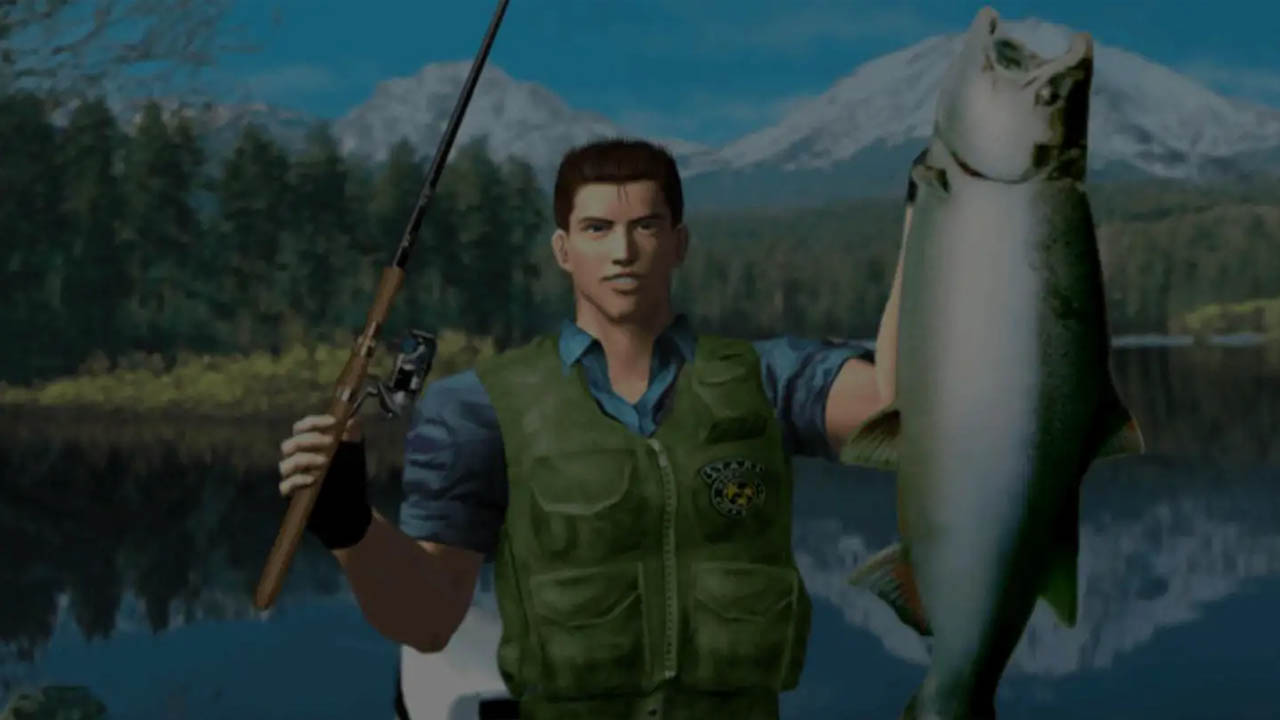
A great man once said, “JRPG need fishing“. He was on to something far deeper than he knew. Fishing mini-games enhance the value and quality of any genre, not just JRPGs. These mini-games usually involve simulating the act of fishing, allowing players to experience the thrill and relaxation of catching fish in casual, bite-sized moments.
Fishing mini-games offer a delightful escape from intense gaming, providing players with a serene and laid-back experience. Immerse yourself in the meditative ambiance of water sounds and picturesque scenery as you wait patiently for that satisfying bite.
Catching fish gives a sense of achievement, activating pleasure receptors in the brain that are tied to real-life activities and in-game rewards. Sometimes, filling out a catalog of caught fish is satisfying in itself, especially in games where artists create imaginative and unique fantasy fish species.
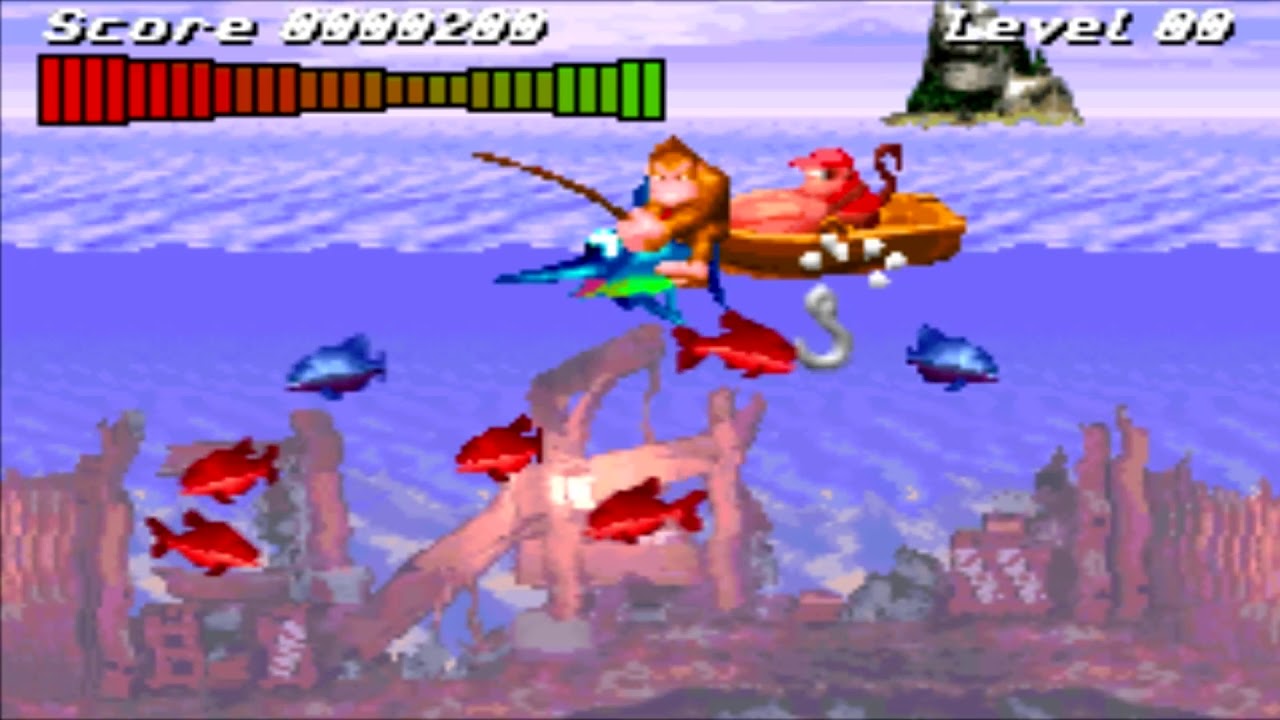
Fishing adds variety to any game that features it. Even Donkey Kong Country on the Game Boy Advance managed to squeeze in a bonus minigame in the menus where DK mounts Enguard and tries to catch colored fish with a line.
The beauty of fishing mini-games is the many ways that developers have imagined fishing. There is no limit to the creativity and imagination of the ways this relaxing pastime has been realized in fan-favorite franchises, surprising gamers by showing up in unexpected genres.
Within this feature, I and a team of fishermen have deduced some of the best implementations of fishing mini-games. Aspects like depth, variety, and uniqueness were under consideration when deciding on which titles to feature.
The Legend of Zelda and the many fishing holes in Hyrule, Termina, and Koholint
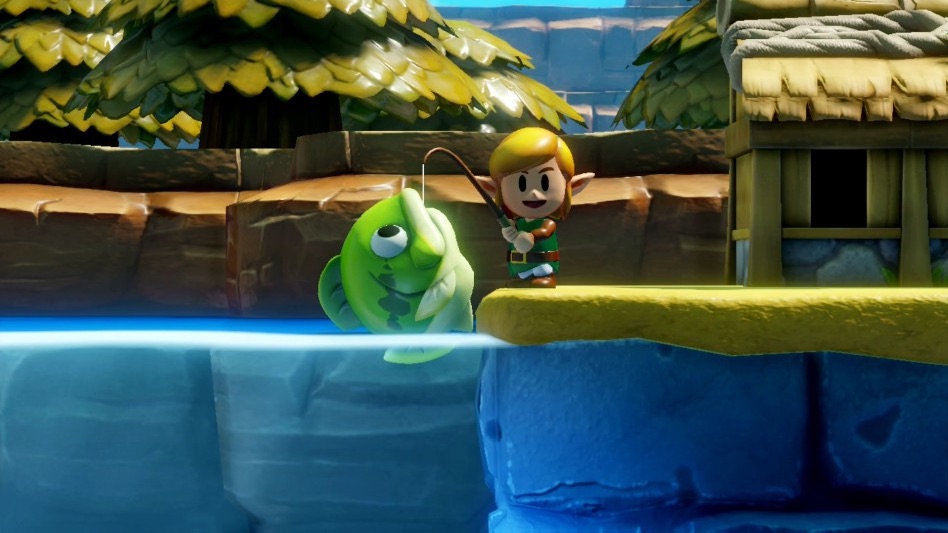
It’s no surprise that a few Zelda games have made it onto this list, and one of them is Link’s Awakening. This Zelda game stands out with its unique shifting POVs, particularly in the fishing mini-game where a sidescroller-style perspective is used. To catch fish, players control Link as he casts a line into the water and maneuvers it to attract the fish. Quick reflexes are essential to successfully hook the fish when they bite.
Within the fishing pond, players encounter a diverse range of fish species, each varying in size and weight. Some fish are common, while others are rare and pose a greater challenge to catch. To add excitement and a touch of difficulty, there’s a time limit for each fishing attempt. Players strive to catch the largest fish possible within the given time frame.
The rewards for successful catches include various goodies like rupees, but the most coveted prize is the heart piece. The fishing pond serves as a delightful diversion, and the time limit creates a sense of pressure that keeps players engaged and entertained. This fishing mechanic is a recurring feature in several fishing mini-games throughout the Zelda series.

Majora’s Mask 3D is a 3DS remake of the original Majora’s Mask, released for the Nintendo 64. It features improved graphics and gameplay enhancements, but none of that mattered because the fishing mini-game was restored after being cut from the original release. Even though Link is doomed to eternal torment in a terrible three-day cycle of death, at least he can still catch a few fish in several of Termina’s fishing holes.
The mechanics of fishing in Majora’s Mask 3D are not much different from those in Ocarina of Time or its remake. However, things are more complex now with multiple fishing spots and different lures to account for. There is even a beefy fish compendium to fill. Some quests are tied to catching certain fishes, and thankfully, they are immune to the effects of time travel.
Majora’s Mask 3D has some divisive changes that upset some fans and for good reason. Yet, restoring the fishing mini-game is one change that everybody can get behind. It’s hard to be mad at this remake when it lets Link catch a pygmy version of Lord Jabu Jabu.

Fishing in Twilight Princess boasts some of the most scenic backdrops in the franchise. It is a great shame that Tears of the Kingdom or Breath of the Wild did not include a fishing mini-game because Twilight Princess offered one of the best and most engaging fishing experiences in a Zelda game. Link can whip out his fishing rod anytime, but for the best results, he must head to Hena’s Fishing Hole, located at the Upper Zora River.
Hena’s Fishing Hole provides specific fishing-related challenges, such as catching certain fish or fulfilling particular fishing objectives, which grant rewarding prizes. Link can use various types of bait and cast from a canoe or the shoreline, but he must be quick as Hena enforces a time limit. The Wii version benefits from intuitive motion control features and immersive sounds from the Wiimote speaker, enhancing the kinesthetic experience.
Twilight Princess‘ iteration of Hyrule offers a diverse range of fish species to catch, complete with a comprehensive fish encyclopedia to keep track of them. The Zelda fishing mini-games are simple yet highly accessible, providing an ideal break from constant exploration and allowing gamers to reflect on all the memorable moments they have experienced throughout Link’s adventures.
Taking a break with Big the Cat in Sonic Frontiers
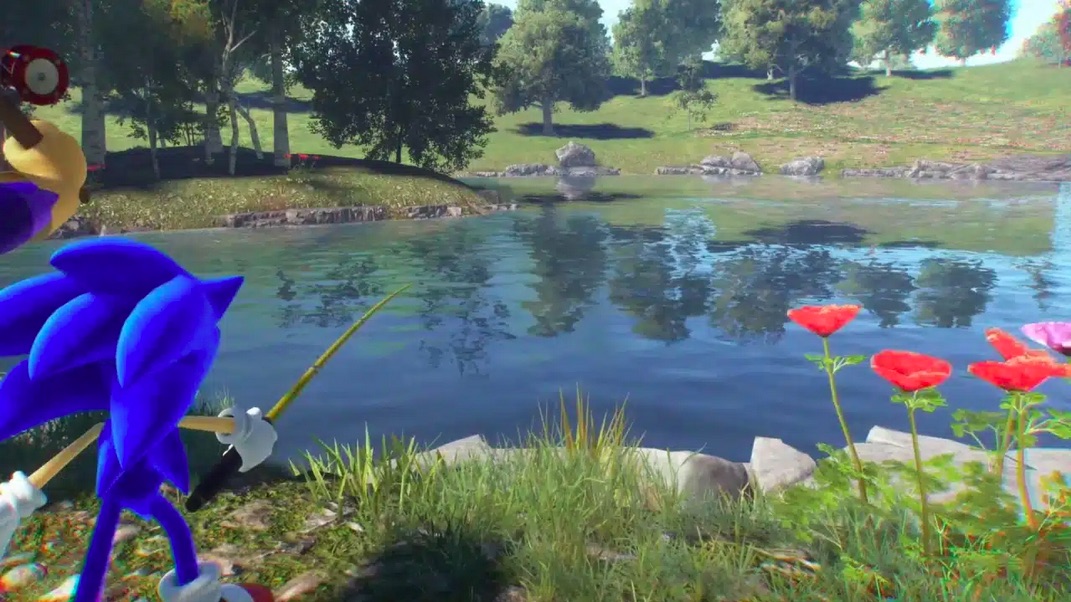
Sonic Frontiers was the highly anticipated open-world collect-a-thon that showcases the true potential of a good Sonic game. Players can explore levels in any order, provided they have the portal gears and keys to unlock them.
For the first time since Brotherhood, Sonic features RPG-style stats that players must manage. Amidst the many ways to acquire collectibles and upgrade materials, spending time with Big the Cat and fishing in the abundant fishing holes on Starfall Islands proves to be a rewarding experience.
Big graciously lends Sonic his fishing rod, but the cost of borrowing it varies depending on the island where gamers choose to fish. In the fishing mini-game of Sonic Frontiers, players must time the opening and closing of red rings within a white ring, with later stages presenting even more challenging timing sequences.

As expected from a Sonic game, the fishing mini-game is fast-paced and wastes no time. However, what surprises players is the extensive array of rewards they can earn from fishing. From various tokens, keys, and gears to stat boosters and other esoteric items that prove useful, gamers will find themselves fishing with Big to maximize their enjoyment and success in the game.
Sonic Frontiers‘ striking moody visual style makes it ideal for fostering a perfect fishing atmosphere. Hilariously, some of the fish designs are rendered in a stylized look, while others appear to be photorealistic, adding to the charm of the game. It’s hard not to appreciate the sight of cartoony mascot characters catching a very real-looking alligator.
Robust fishing in the Breath of Fire games

Fishing has been a staple in Breath of Fire since the first game, but it wasn’t until Breath of Fire II in 1994 that it truly came into its own. Ryu can enjoy fishing in lakes, rivers, and reefs, with each location having its own dedicated fishing screen. What makes fishing in the Breath of Fire games so enthralling is the impeccable presentation and consistently excellent pixel art and animation.
The main goal is to catch fish by using various types of bait. Players can select different baits to attract different fish species, each with its own unique behavior. As a result, players must experiment with different baits to successfully catch a variety of fish.
While some fish may be common and easy to catch, others might be rare and require specific bait and fishing techniques to hook them. The experience can involve an element of randomness and rely on trial and error, but this accurately reflects the real fishing experience in life too.
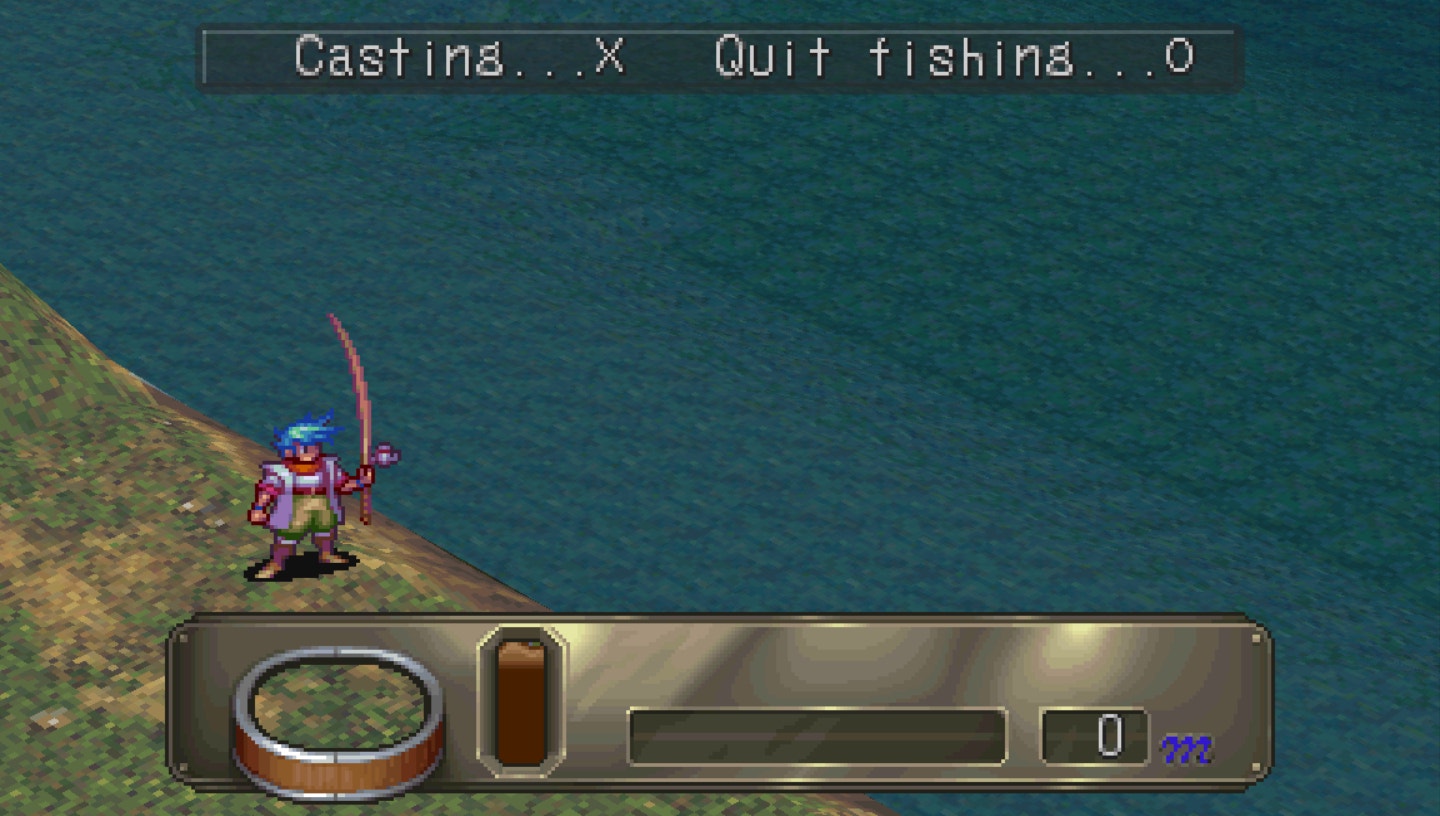
Breath of Fire III was a classic PlayStation JRPG released in 1997 and featured an impressive fishing side activity that spanned different locations throughout the game world. Casting a line into the water and waiting for a fish to bite is the easy part.
When a fish approaches the bait, a message prompts the player to press a button at the right time to hook the fish. The timing is crucial, and gamers will need to be attentive to catch the fish successfully and also manage Ryu’s stamina. This mini-game is important in Breath of Fire III because fishing is tied to several quests and a lot of useful items are acquired from fishing.
Breath of Fire III also has a fish catalog/ encyclopedia. It records information about each caught fish, such as its name, size, and where it was caught which is handy when trying to remember where certain species live when trying to fulfill specific quests.
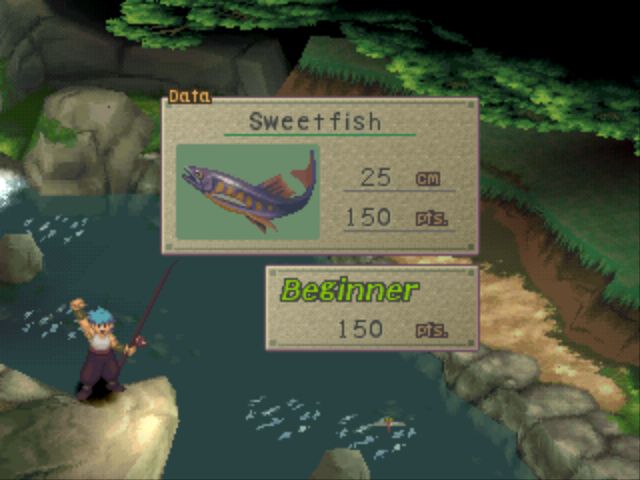
Breath of Fire IV was a sequel that expanded upon its predecessor in many ways. While most fans praise the amazing pixel art and animation, fish enthusiasts will especially note the significant improvements made to the fishing mini-game. Ryu now has access to a wider selection of rods, over twenty fish to catch, seventeen distinct fishing spots with unique backdrops, and a variety of lures and baits to utilize.
The sheer number of options is staggering, and what makes it even more impressive is that Breath of Fire IV is considered one of the best-looking PlayStation games. The abundance of unique frames of animation elevates this fishing mini-game to one of the most fluid and visually appealing experiences on the console.
Even when divorced from Ryu’s main quest, the fishing mini-game is developed enough to almost stand on its own as a full-fledged fishing game.
Prince Noctis Lucis Caelum: Cup Noodle shill and ultimate master baiter of Final Fantasy
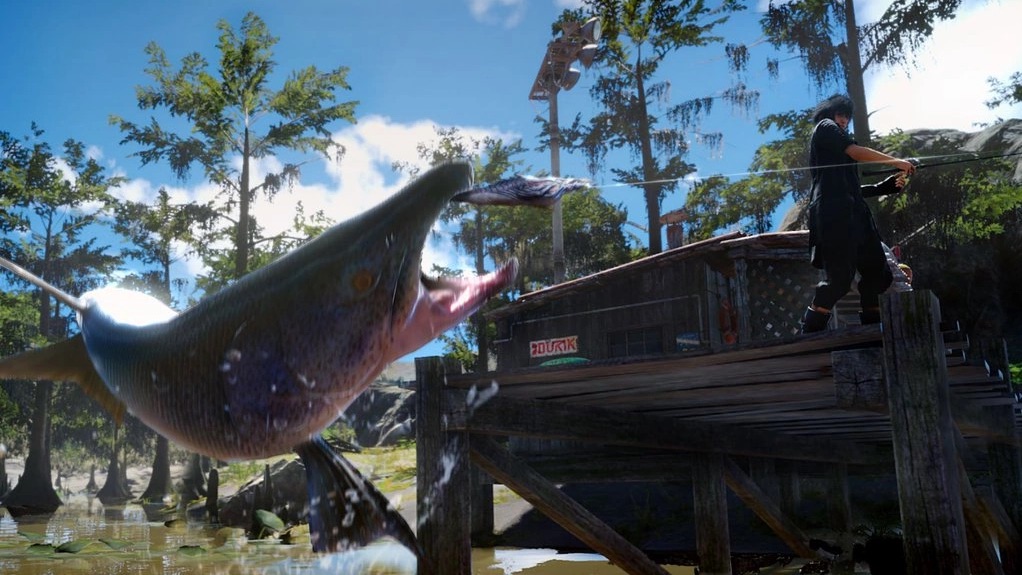
Everyone is aware that the journey to Final Fantasy XV was fraught with miscalculations and a significant misunderstanding of fans’ desires.
The gameplay further deviated from its RPG roots, and the final result failed to meet the expectations of action fans. What emerged was a disjointed adventure game with impressive visuals, and perhaps the most elaborately developed fishing simulation ever stapled onto another game.
Eos, the expansive and lush setting, showcases verdant rolling hills, expansive canyons, and, of course, glistening fishing holes. Among all the titles in this feature, Final Fantasy XV stands out as the most technologically impressive, fully leveraging eighth-gen hardware to bring some of the most picturesque vistas to life.
The atmosphere feels remarkably grounded, and the gradual day and night cycle heightens the perception of time’s passage. Subtle touches like fireflies drifting in front of Noctis and the radiant glow of bioluminescent fish infuse the nighttime with a magical quality, reminiscent of what one would expect from a Final Fantasy game.
The banter exchanged between Noctis and his party helps alleviate prolonged periods of silence, even when they playfully tease him for failing to catch anything. The fishing mini-game in XV was such a beloved feature that the Royal Edition DLC further expanded the fishing options by giving players full control of the royal vessel to go fishing in the Cygillan Sea.

The mechanics of fishing in XV require essential equipment, including a fishing rod, various types of fishing lines, and an assortment of lures. As players advance through the game, they have the opportunity to acquire superior fishing gear, enabling them to successfully catch more challenging and rare fish.
Once hooked, the process involves pulling the analog stick in the opposite direction of the fish’s movement. Noctis must carefully manage the tension of the line, as each line possesses its own HP values and triggers quick-time events (QTEs) when they appear.
Noctis also needs to factor in variables such as time of day and weather, as these factors influence fish behavior. Upgrading his fishing gear becomes essential if he wishes to increase his chances of capturing larger and rarer aquatic creatures. Additionally, Noctis accumulates fishing skill points as he catches more fish, which can be utilized to unlock new fishing abilities and perks, thereby enhancing his angling proficiency.
Thanks to the remarkable scenery in XV, the act of exploration and the journey to fishing spots become integral components of the experience. These aspects contribute to building anticipation leading up to the moment of hooking a fish, further immersing gamers within the game’s captivating setting.

Fishing is the best-executed aspect in the mire of XV‘s shortcomings. This feature was so beloved, it has become core to XV‘s identity and when World of Final Fantasy got upgraded to Maxima, it added Noctis and a variation of his fishing mini-game.
In Maxima, fishing is streamlined when compared to XV, but it is also far more difficult due to the gameplay being more akin to very strict quick-time events (QTEs). There is no wrestling with the line’s tension; you simply need to hit the prompts as they appear.
This is harder than it seems because the window to input these presses is very tight. Gamers who prove themselves to be the ultimate master baiters in Maxima and complete all of the fishing mini-game challenges will obtain Noctis as a party member. For all its disappointments, XV proves that any game with fishing in it can’t be all bad.
Fishing across the ages in Yakuza
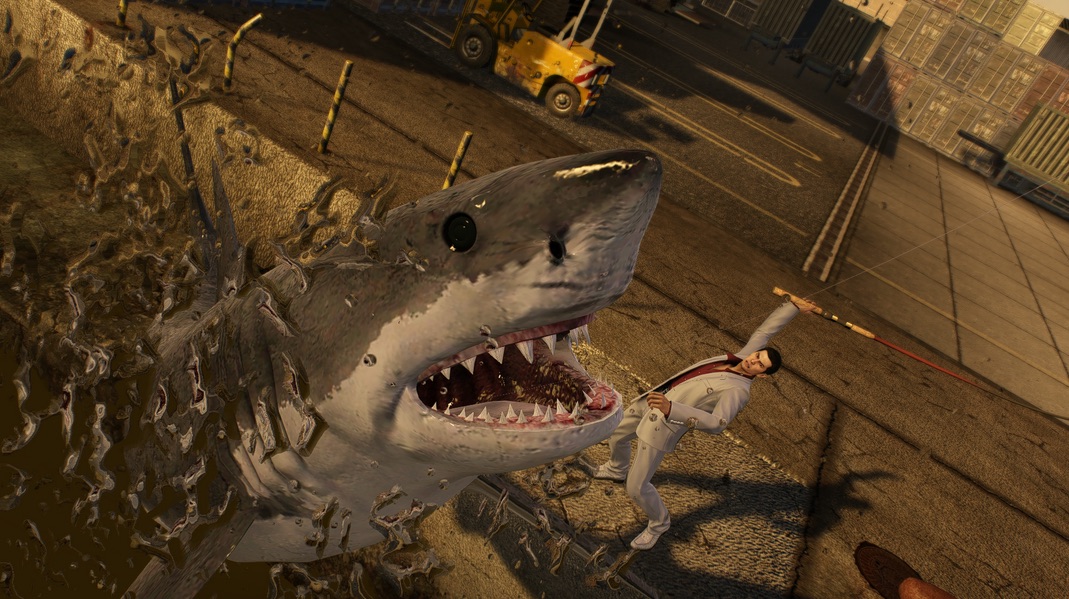
Fishing in Yakuza games often incorporates elements of Japanese fishing culture, adding an authentic touch to the mini-game. There have been numerous entries in this franchise, including spin-offs like Judgment or Ishin!, where the setting and characters are reimagined in the Edo era.
Regardless of the game’s context, there is always an opportunity to catch fish and enjoy breathtaking vistas. In most cases, the fishing mini-games in Yakuza are consistent and revolve around managing line tension and selecting the right bait.
What sets Yakuza apart is the absurdity and over-the-top style that Sega has infused into this usually relaxing pastime. The outrageous spectacle of Kiryu reeling in a Megalodon-sized Great White Shark while striking an extravagant pose is utterly endearing.

Yakuza 6: Song of Life mixes things up by introducing a new kind of fishing mini-game to its eclectic gameplay.
Kiryu can take a spear gun and go diving off the coast of Okinawa, engaging in an arcade-like rail-shooter experience. It is fast-paced and completely over-the-top, with Kiryu swimming through sunken ships and blasting away at large sea monsters.
While spearfishing in Song of Life may not be a traditional example of a fishing mini-game, it does offer something distinct from the relaxing ambiance of standing at a dock with a rod in hand. Regardless, players will likely want to engage with both types of fishing in these games to get the best experience.
Relaxing fishing holes in Warframe’s Plains of Eidolon

Possibly the best part of the Plains of Eidolon update was the inclusion of fishing. It is a way to obtain important resources that can be used on some of the game’s strongest equipment, and provides a fun and relaxing time.
There are many variables to fishing in Warframe, including what part of the map you choose, the time of day, how strong your spear is, and what bait you use.
Much like everything else in Warframe, you need to know exactly what you are doing to catch the correct fish.
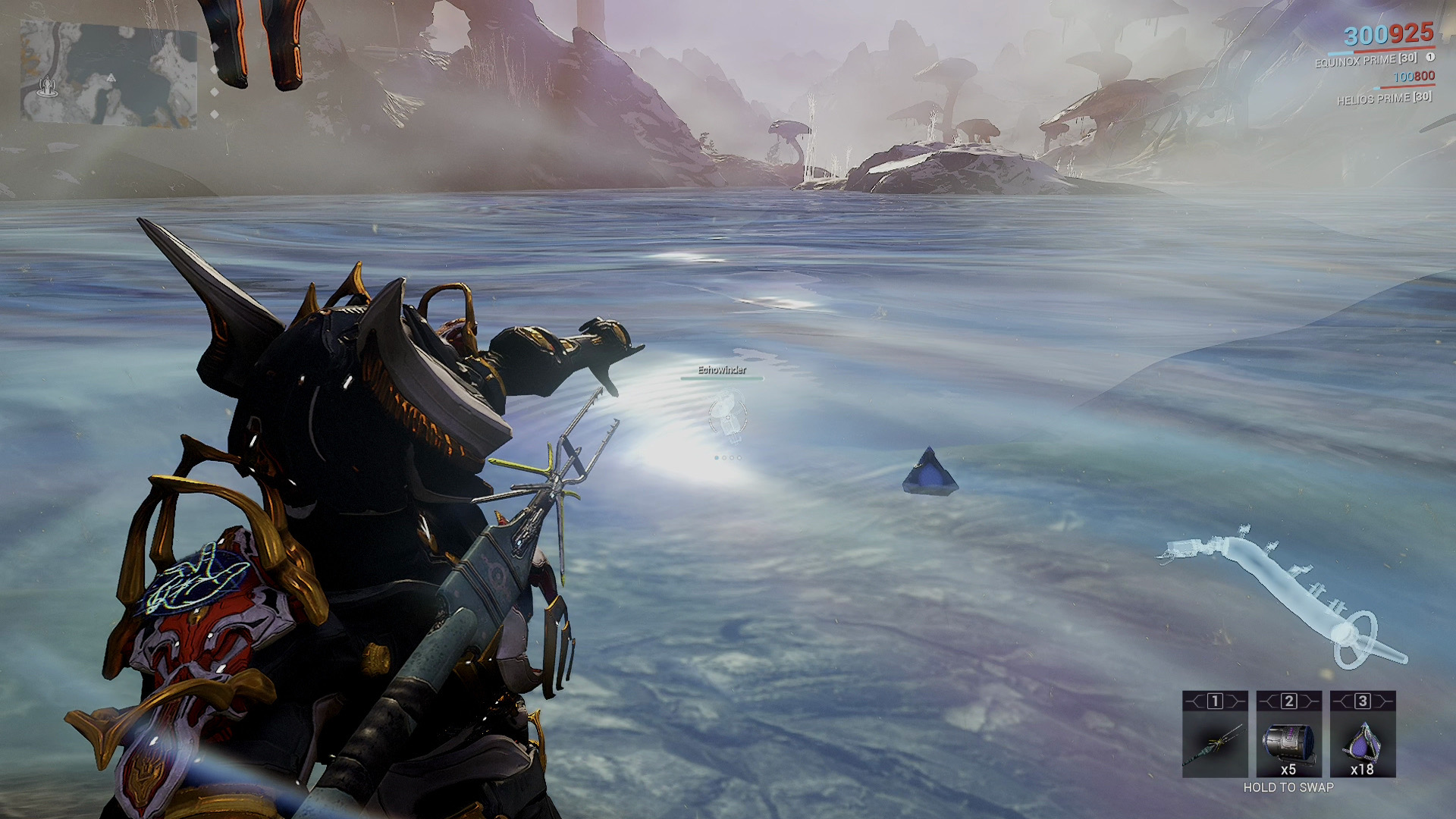
Your workflow will always consist of choosing your location, throwing down your bait, and aiming your spear at the fish you want to collect. If you succeed in timing your throw correctly, you’ll be able to reel it in.
Depending on your spear, this may also shock the water and stun nearby fish, allowing you to keep your momentum going with a chain of catches. After acquiring your haul, you can either choose to put them in your aquarium or fillet them for raw materials.
Fishing in Warframe is a really nice break from the constant shooting and destruction; it’s a simple and relaxing activity that also helps you acquire stronger equipment or gain reputation with the Plains of Eidolon factions.
Secret spearfishing in either Resident Evil 4 or its remake

Resident Evil 4 and its remake are thrilling games that plunge Leon into the depths of a Spanish province where a dangerous body-horror cult seeks to end his life.
Both games excel in their high-stakes action and resource management, pushing players to their limits. Yet, amidst the unrelenting terror, taking a respite becomes essential for some. What better way to find solace than to go spearfishing in the lake by the Pueblo?
The same lake that was once terrorized by a dreadful monster is now teeming with delicious bass. Equipped with a boat and an endless supply of spears, Leon embarks on a quest to hunt and catch these aquatic creatures. Why would anyone bother grabbing all this bass? Not only do these fish serve as highly effective health restoratives, but the shrewd merchant is also willing to buy them at a high price!
The atmosphere in either version is chilling and haunting which makes it a fascinating setting for fishing. It is very rare for a fishing game to be horror-themed, yet both Resident Evil 4s show the potential in the premise.

This unique activity is available in both the real Resident Evil 4 and its remake. While not exactly a traditional mini-game, the remake expands upon the concept by introducing a sidequest. In this quest, Leon undertakes the challenge of hunting down a colossal bass for a substantial reward, adding an extra layer of excitement to his already perilous journey.
Spearfishing was an exceedingly obscure side activity in the original Resident Evil 4, with most gamers unaware of its existence. It’s noteworthy that the boys at Capcom chose to retain this element in the remake, even as certain cuts were made.
There are many other curious and amusing examples of fishing mini-games out there. NieR: Replicant and NieR: Automata both have simple yet effective fishing in them that is enhanced thanks to their soundtracks and ambiance. Red Dead Redemption 2 is also no slouch in delivering an impressively detailed fishing mini-game.
Okami, Deadly Premonition, and even Kirby and the Forgotten Land feature fishing, but which are your favorites? Sound off in the comments below!